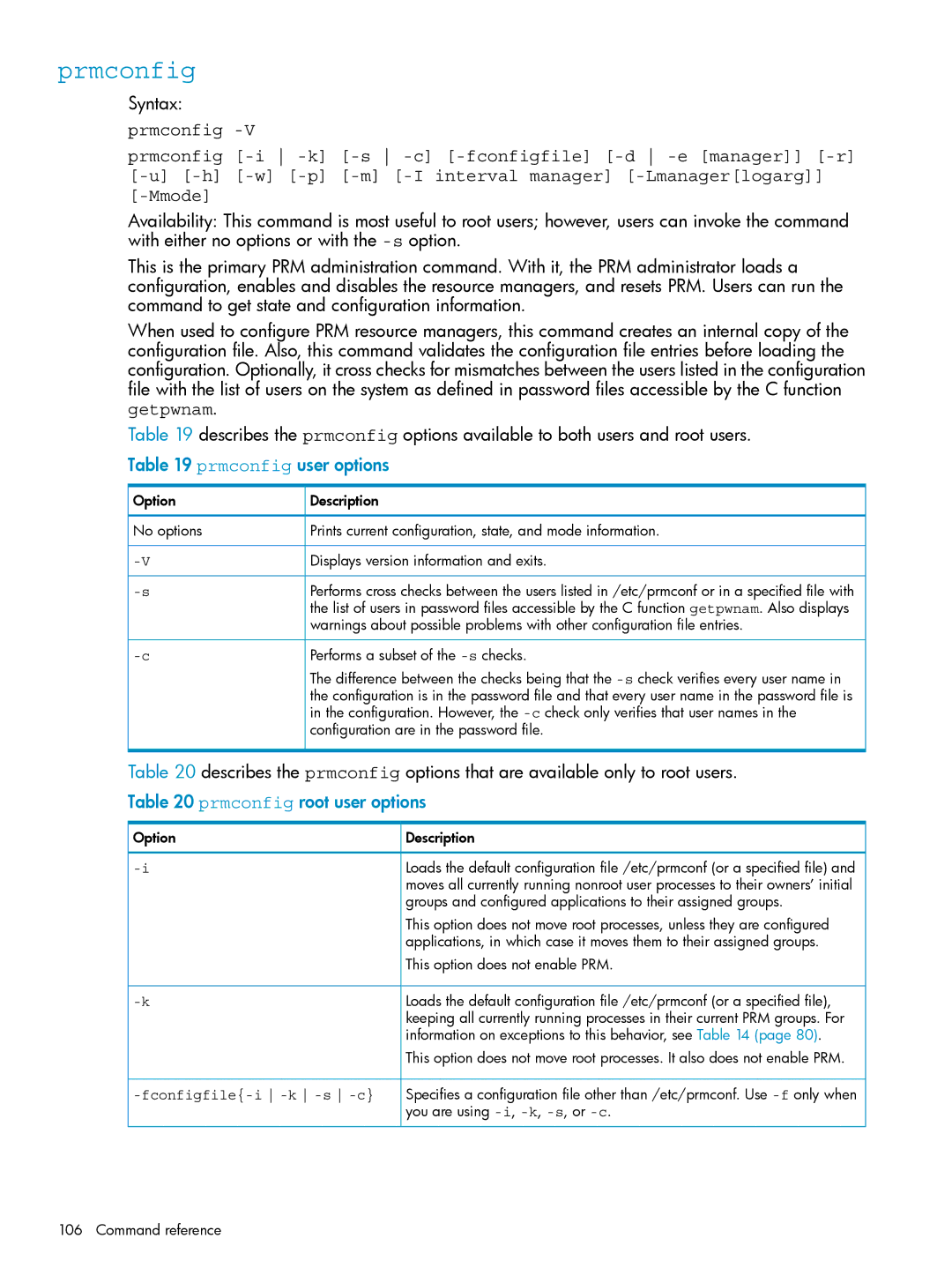
prmconfig
Syntax:
prmconfig
prmconfig
Availability: This command is most useful to root users; however, users can invoke the command with either no options or with the
This is the primary PRM administration command. With it, the PRM administrator loads a configuration, enables and disables the resource managers, and resets PRM. Users can run the command to get state and configuration information.
When used to configure PRM resource managers, this command creates an internal copy of the configuration file. Also, this command validates the configuration file entries before loading the configuration. Optionally, it cross checks for mismatches between the users listed in the configuration file with the list of users on the system as defined in password files accessible by the C function getpwnam.
Table 19 describes the prmconfig options available to both users and root users.
Table 19 prmconfig user options
Option | Description |
No options | Prints current configuration, state, and mode information. |
Displays version information and exits. | |
Performs cross checks between the users listed in /etc/prmconf or in a specified file with | |
| the list of users in password files accessible by the C function getpwnam. Also displays |
| warnings about possible problems with other configuration file entries. |
Performs a subset of the | |
| The difference between the checks being that the |
| the configuration is in the password file and that every user name in the password file is |
| in the configuration. However, the |
| configuration are in the password file. |
Table 20 describes the prmconfig options that are available only to root users.
Table 20 prmconfig root user options
Option | Description |
Loads the default configuration file /etc/prmconf (or a specified file) and | |
| moves all currently running nonroot user processes to their owners’ initial |
| groups and configured applications to their assigned groups. |
| This option does not move root processes, unless they are configured |
| applications, in which case it moves them to their assigned groups. |
| This option does not enable PRM. |
Loads the default configuration file /etc/prmconf (or a specified file), | |
| keeping all currently running processes in their current PRM groups. For |
| information on exceptions to this behavior, see Table 14 (page 80). |
| This option does not move root processes. It also does not enable PRM. |
| Specifies a configuration file other than /etc/prmconf. Use |
| you are using |
106 Command reference
